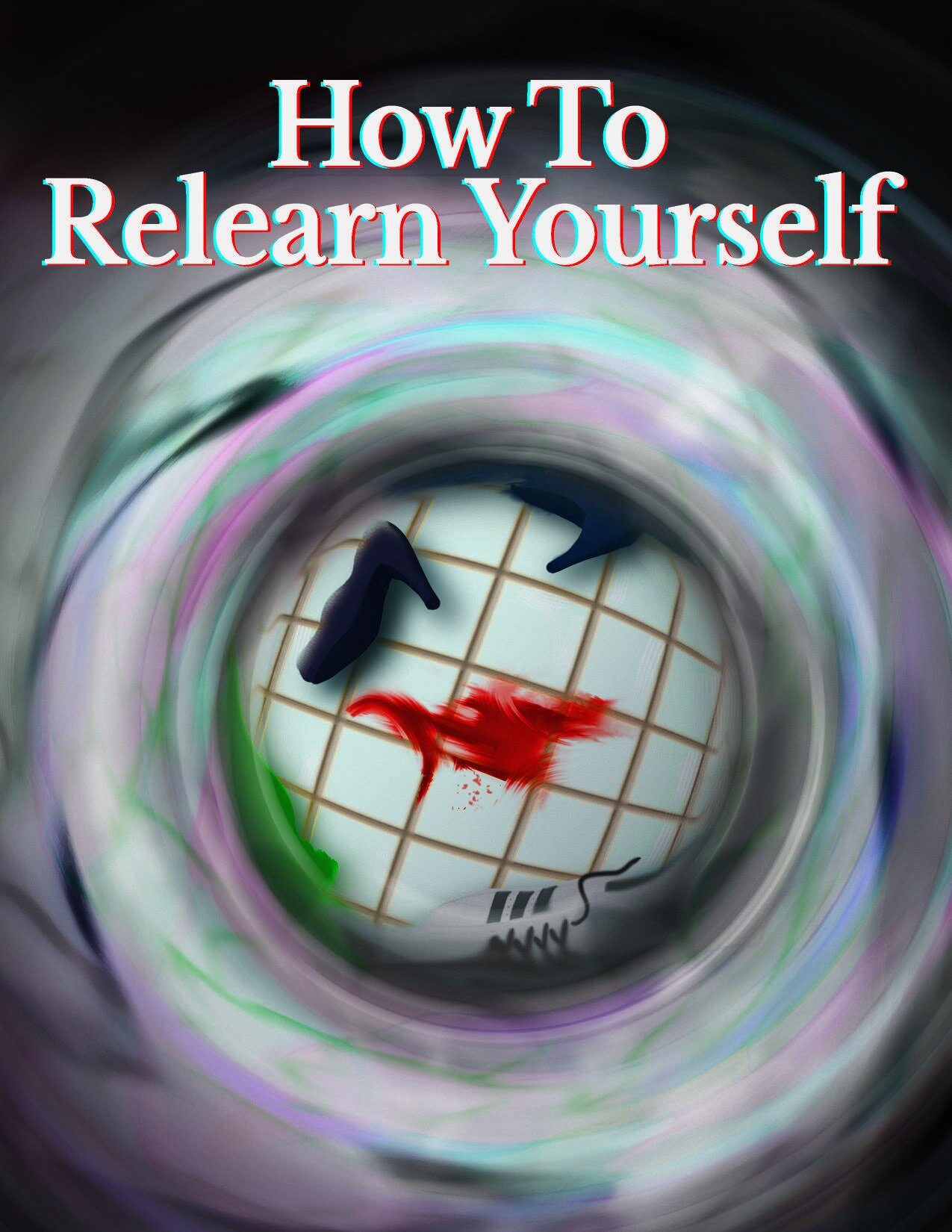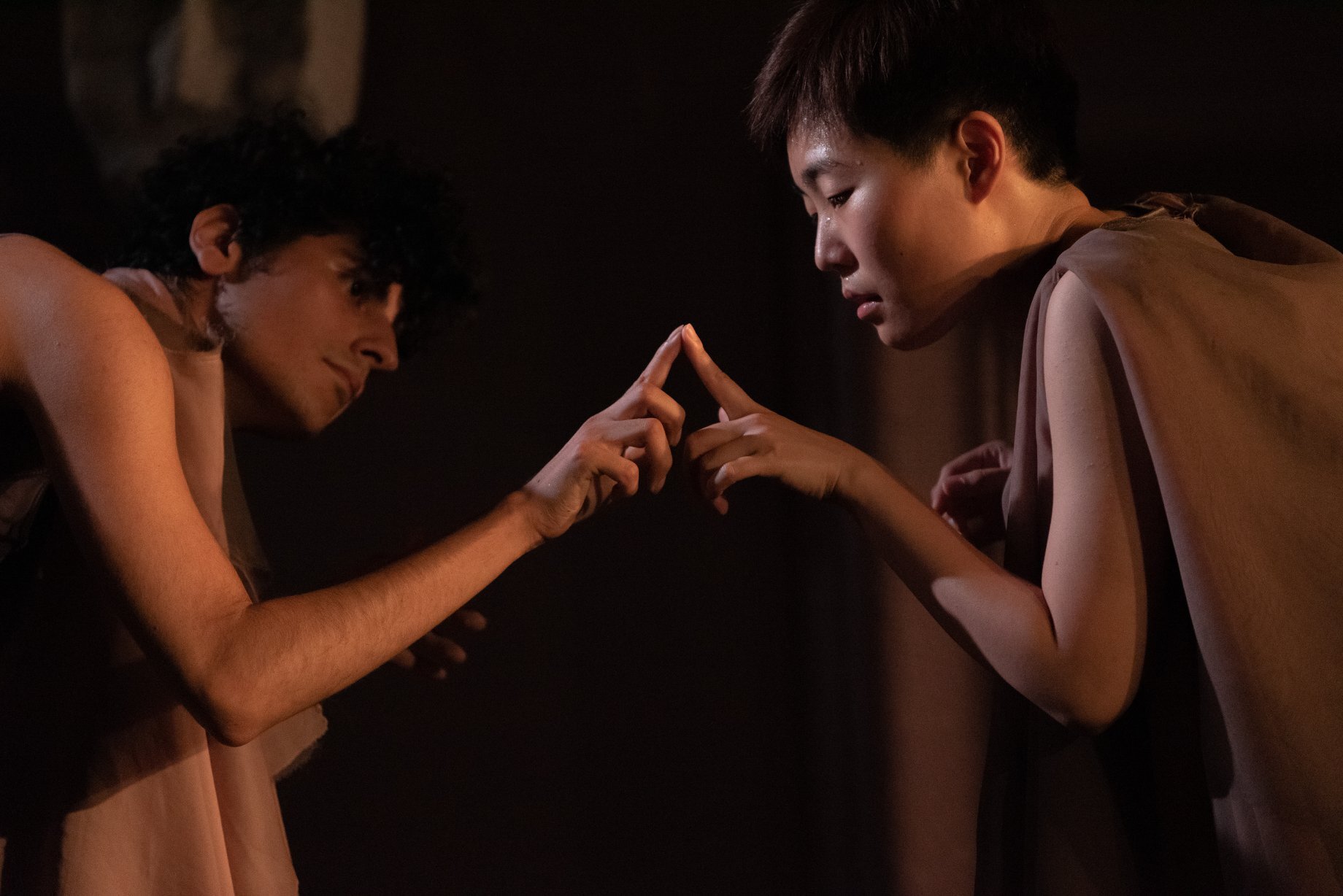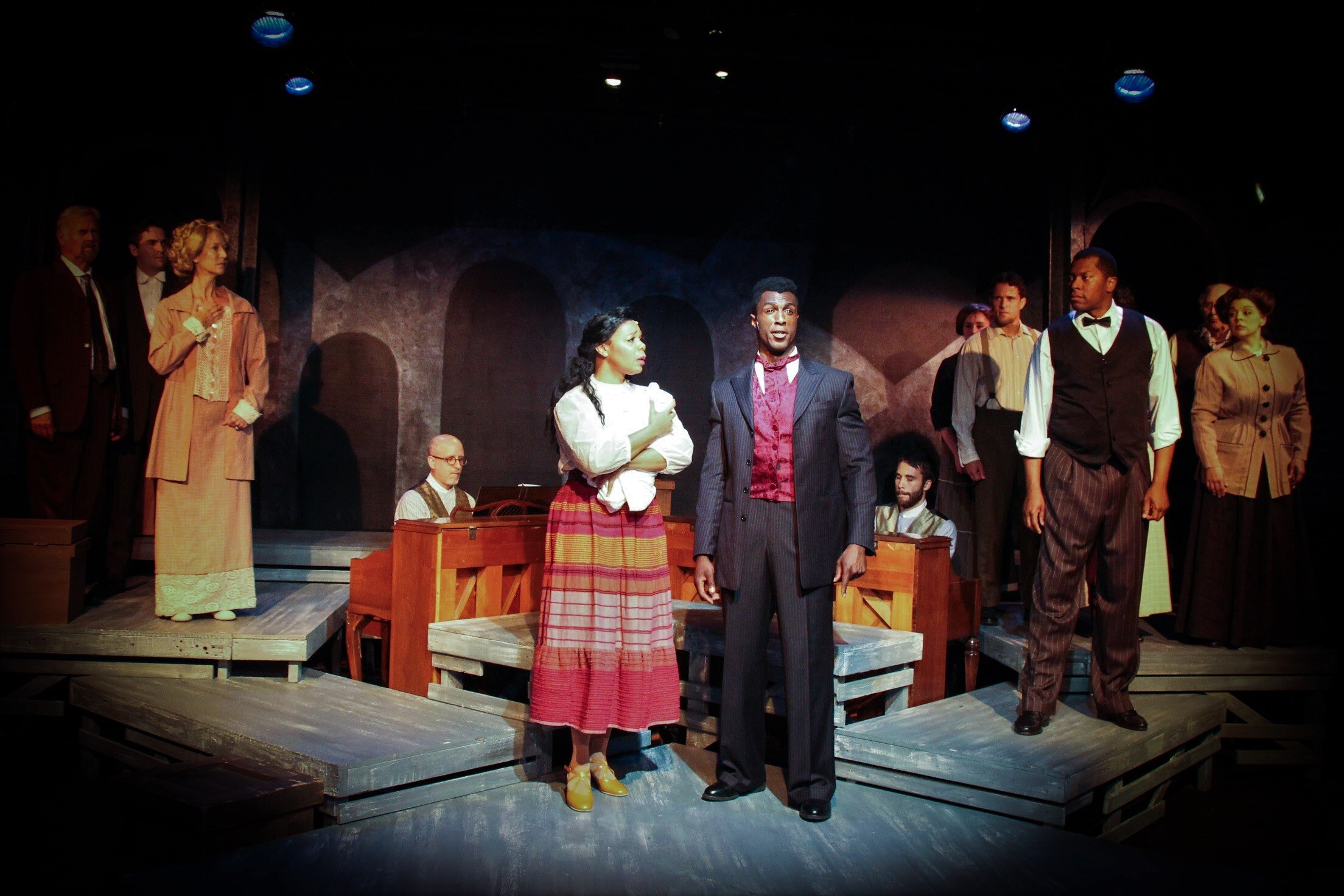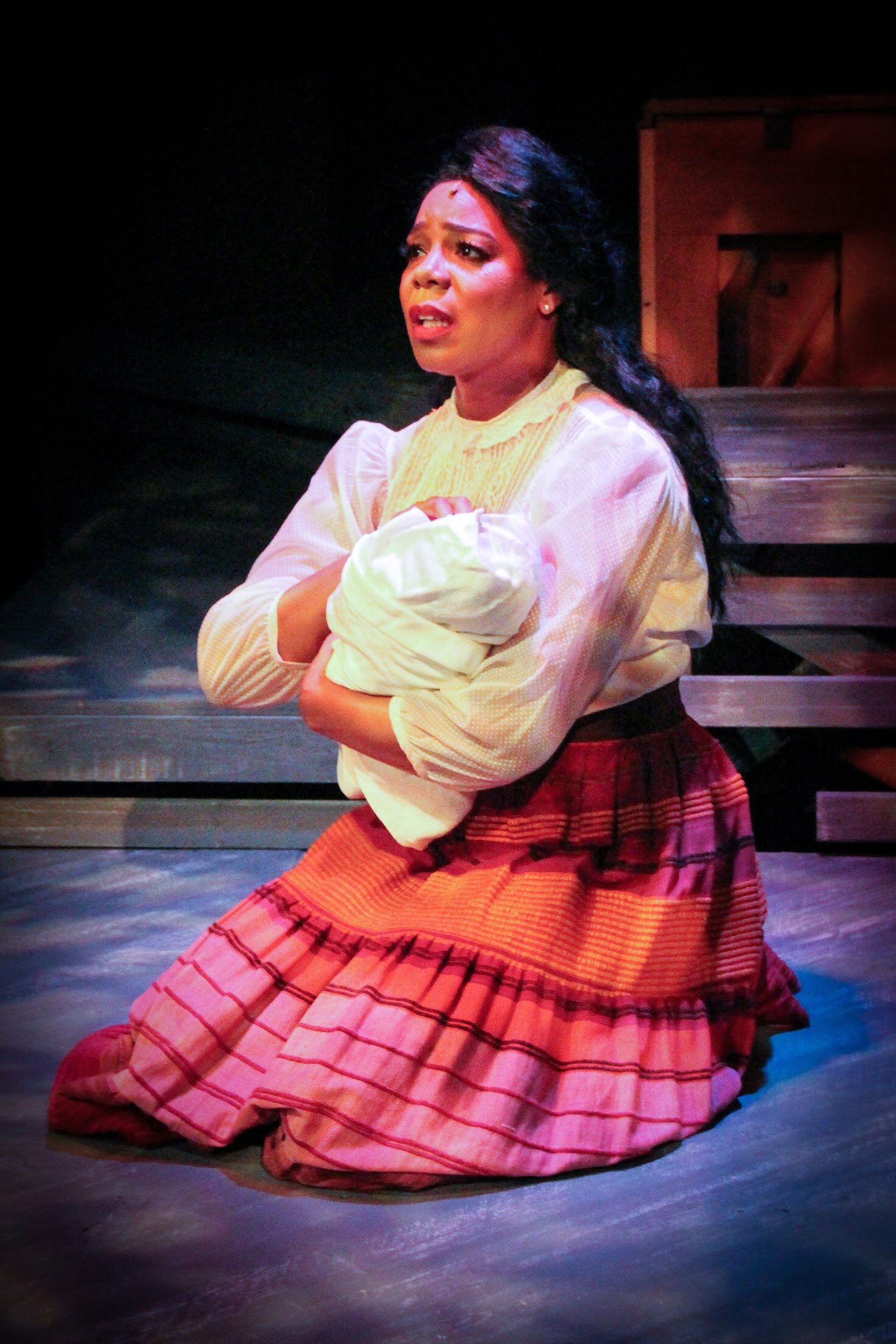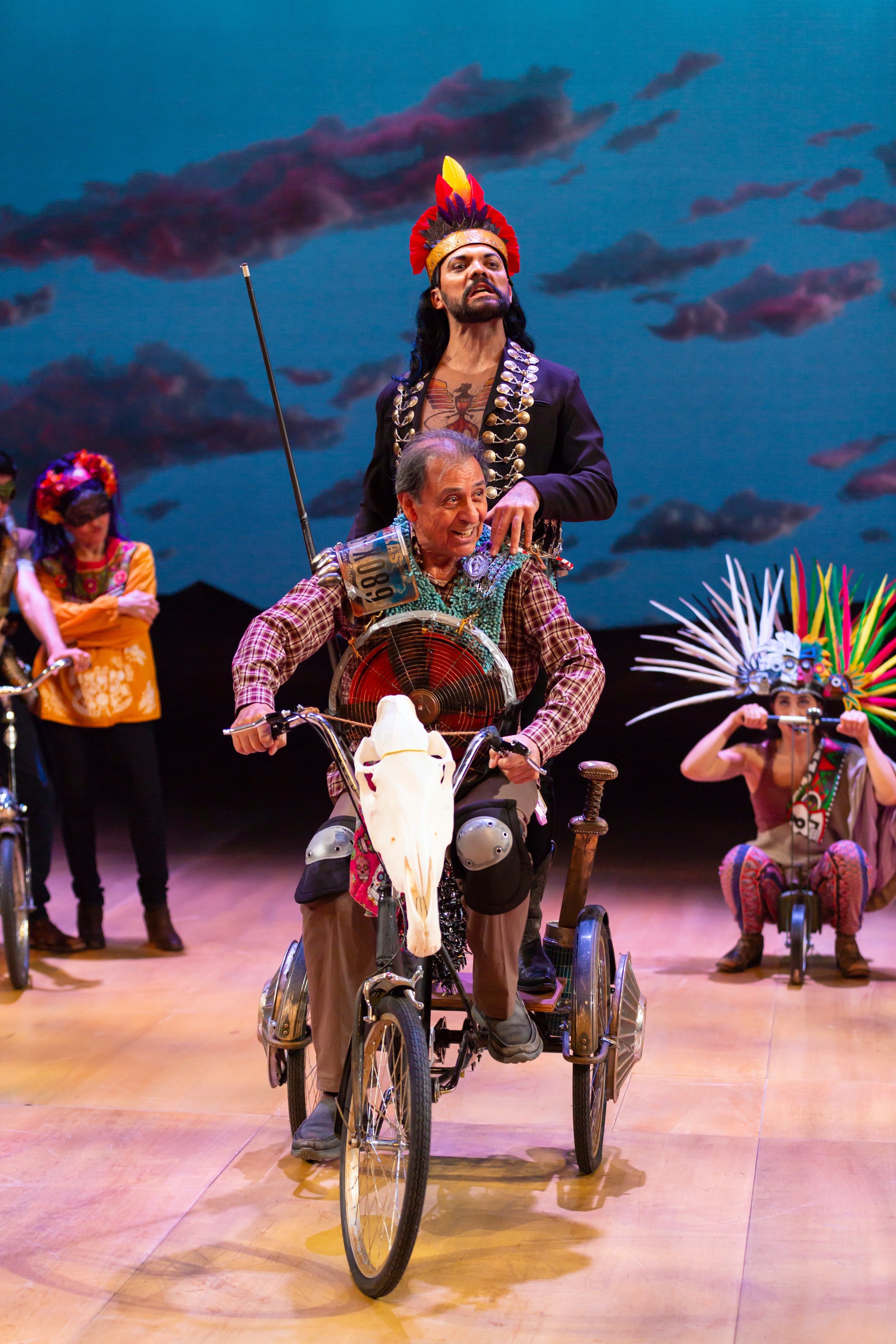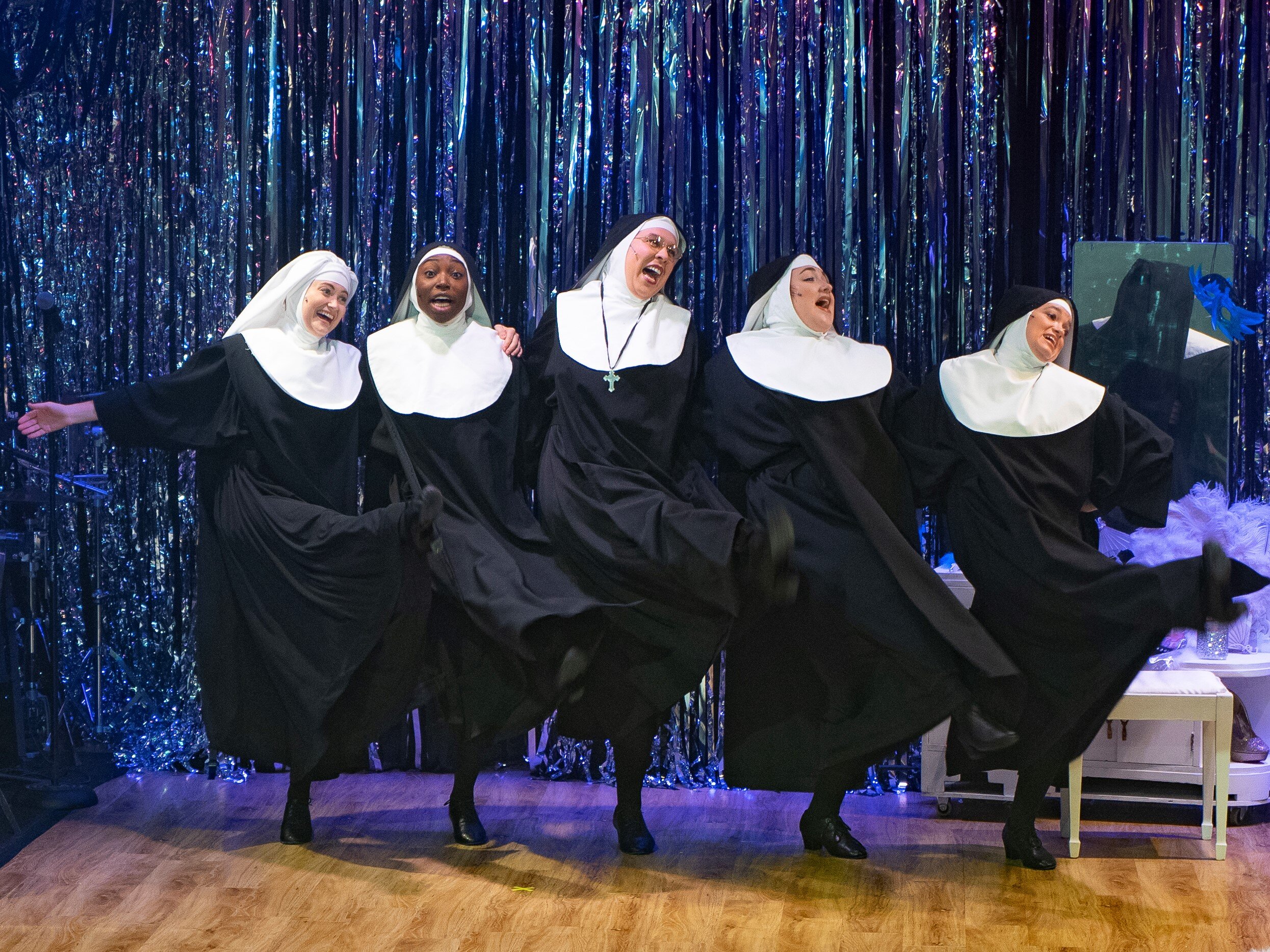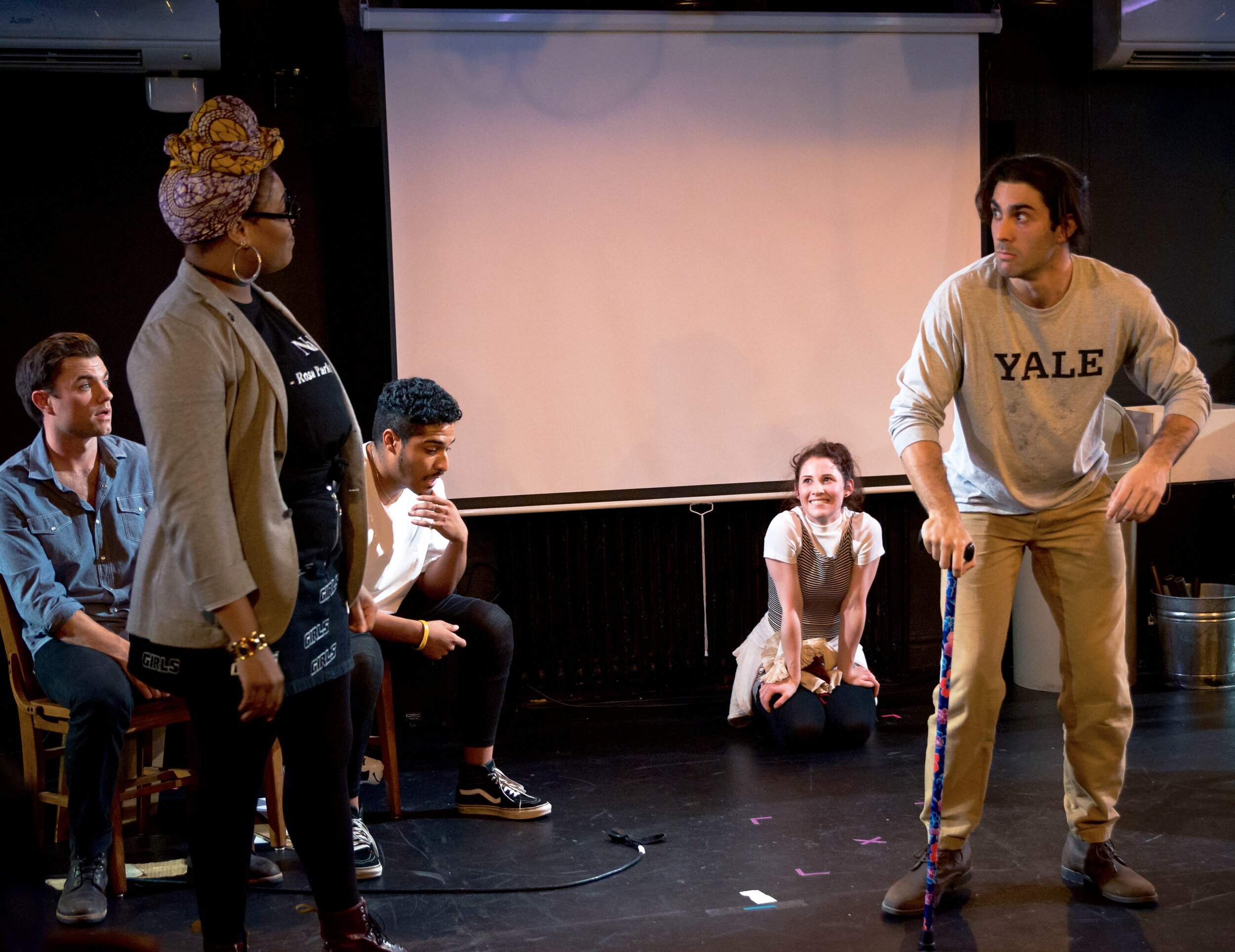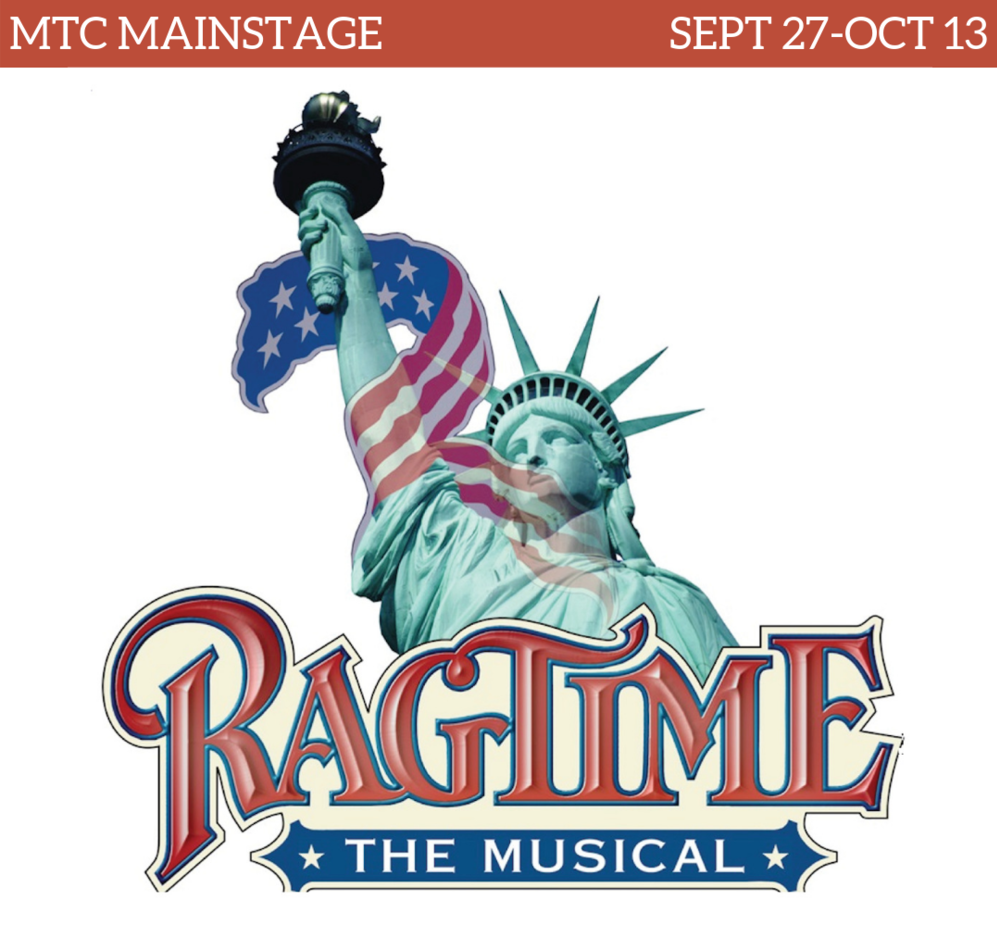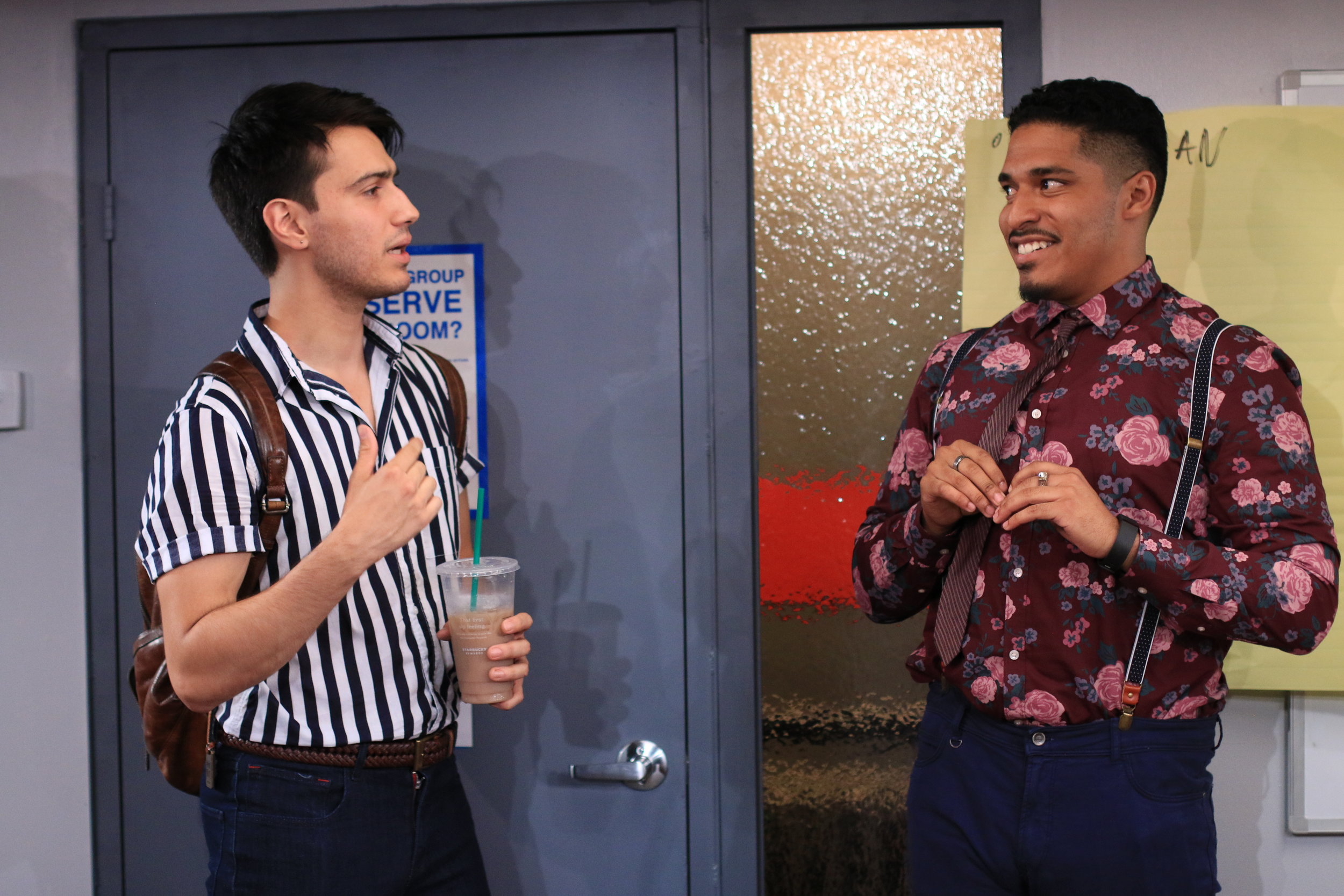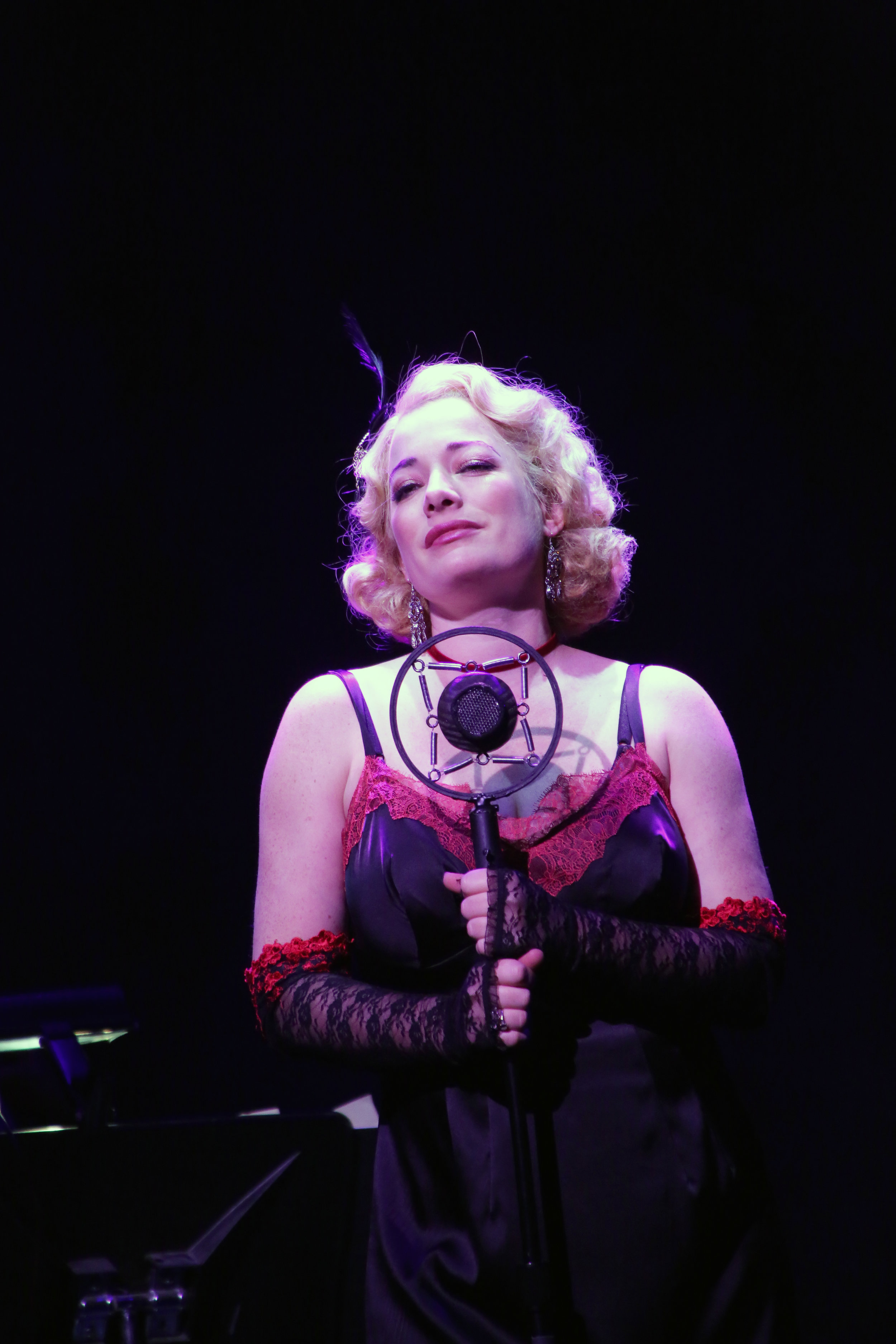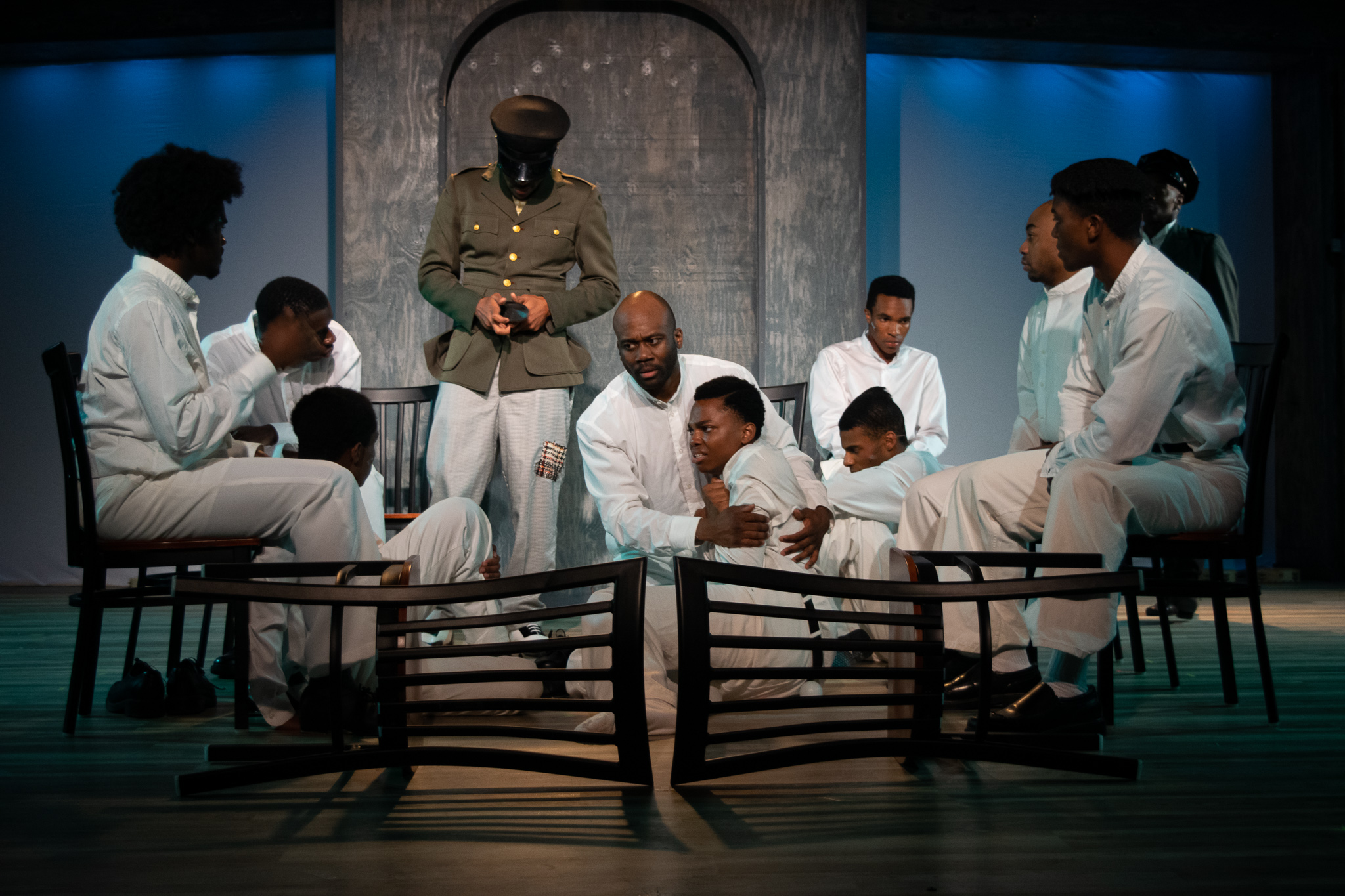Review of On the Grounds of Belonging, Long Wharf Theatre
Maybe love is always dangerous. It risks exposure, it requires commitment—often life-changing—and it alters, sometimes subtly, sometimes outrageously, the status quo. But when the two lovers are men—one white, one black—in 1950s’ Houston, Texas, love comes with heavy threats.
Ricardo Pérez González’s On the Grounds of Belonging, in its world premiere at Long Wharf Theatre through November 3, directed with a great sense of space and energy and intimacy by David Mendizábal, is a rare achievement in its even-handed treatment of same-sex love and interracial love in a time when both were illegal in the U.S. and, worse, could provoke the kind of vicious hatred that has become highly visible in the twenty-first century. The play registers tellingly the tonality of the Jim Crow era without too much anachronism. It is something of a period play, but fired by the conviction of our own moment. And that makes for a vital evening of theater.
Russell MOntgomery (Calvin Leon Smith), Tom Ashton (Jeremiah Clapp) in Long Wharf Theatre’s production of On the Grounds of Belonging (photo T. Charles Erickson)
The opening sets the tone. We meet two regulars of the Red Room, a black gay bar: Russell Montgomery (Calvin Leon Smith) a bookish type often the object of the lust of Henry Stanfield (Blake Anthony Morris), a player with a florid manner. As they’re hanging out after a set by Tanya Starr (Tracey Conyer Lee), the kind of diva forever an inspiration to drag acts, with Hugh Williams (Thomas Silcott), a wonderfully canny onlooker, on the bar, a white woman comes to the door unexpectedly. Turns out the woman—to whom everyone present is obsequiously deferential at once—is Tom Aston (Jeremiah Clapp) in drag. He was set to perform at the Gold Room, the white gay bar across the street, but wants to hideout until a raid in progress there blows over.
Russell Montgomery (Calvin Leon Smith), On the Grounds of Belonging, Long Wharf Theatre (photo T. Charles Erickson)
In that first scene, Pérez González demonstrates a great feel for repartee among familiars and among the same when someone new—and socially different—arrives. The scene is engaging on several levels and Tom’s efforts to flirt with Russell are free of camp as they ratchet up the heat between them. We’re hooked on this budding romance, one that’s abetted by Hugh, but which must be concealed from Henry who, though he only trifles with Russell, would be affronted by his friend having an interracial affair. As Russell, Calvin Leon Smith displays a thoughtful intensity that makes his character an instant focus. This is his story, as we see his love for Tom lead him into new terrain.
Mooney Fitzpatrick (Craig Bockhorn), On the Grounds of Belonging, Long Wharf Theatre (photo T. Charles Erickson)
The dramatic stakes are further inflated by Mooney Fitzpatrick (Craig Bockhorn), owner of both bars and a character who is truly singular: a racist Southern gay man. The portrayal of this figure is a good indication of the quality of the writing and acting here. Mooney could be a one-dimensional bully or simply a foil, instead he has sympathetic moments and, like Hugh, a knowing sense of the mores of the area. He makes clear that, while gay bars may be tolerated, with occasional raids and beatings, interracial amours will bring on a lynching. And the way he sucks the air out of the room, treating all blacks as lackeys, lets us know where and when we are.
Hugh Williams (Thomas Silcott), On the Grounds of Belonging, Long Wharf Theatre (photo T. Charles Erickson)
A standout scene occurs late in the play when Hugh, dallying with a baseball bat, finally confronts Mooney in terms that make no bones about their enmity. It’s a satisfying rendering of how longstanding grievance can inspire succinct confrontation. As Tanya, Tracey Conyer Scott enjoys a moment of assertion as well, a key scene that shows how the indignities we see her face find their outlet in a command of others. Scott’s singing is a great plus as well, especially in a number that helps cut tension as the play transitions from lighter to darker.
Tanya Starr (Tracey Conyer Lee), Henry Stanfield (Blake Anthony Morris), On the Grounds of Belonging, Long Wharf Theatre (photo T. Charles Erickson)
The main set is a comfortable if simple bar with a leafy walkway above. There Tom and Russell have a touching moment of love set against fears of where their romance is taking them. The overtones of other “star-crossed” loves remain in play though without necessarily tending to tragedy. A scene of violence midway through, around a bed that served as the site of Russell and Tom’s first coupling, nicely juxtaposes the two sides of physical interaction—loving and fighting. The conclusion of that scene sets up a plot device that may cause a feeling of being a bit played, in the end. But then again, it’s not the end. Pérez González has said On the Grounds of Belonging is the first installment of a trilogy. Here’s hoping Long Wharf will bring us the next part when it’s ready.
The 2019-20 season finds new Artistic Director Jacob G. Padrón putting his mark on Long Wharf, an enduring theater that began in the mid-1960s (not too long after the period of On the Grounds of Belonging) with its eye on (in Board Chair Laura Pappano’s words) a “social-justice-activism-meets-art-to-spur-conversation vibe.” The breath of new life in the theater was evident on opening night, boding well for the transformation Padrón speaks of in the show’s program, with a season “highlighting an inclusive culture in all its complexities.” The season is off to an inspiring start.
On the Grounds of Belonging
By Ricardo Pérez González
Directed by David Mendizábal
Set Design: Wilson Chin; Costume Design: Ntokozo Fuzunina Kunene; Lighting Design: Cha See; Composition & Sound Design: Mauricio Escamilla; Fight & Intimacy Director: Unkledave’s Fight-House; Production Stage Manager: Bianca A. Hooi; Assistant Stage Manager: Amy Patricia Stern
Cast: Craig Buckhorn, Jeremiah Clapp, Tracey Conyer Lee, Blake Anthony Morris, Thomas Silcott, Calvin Leon Smith
Long Wharf Theatre
October 9-November 3, 2019








